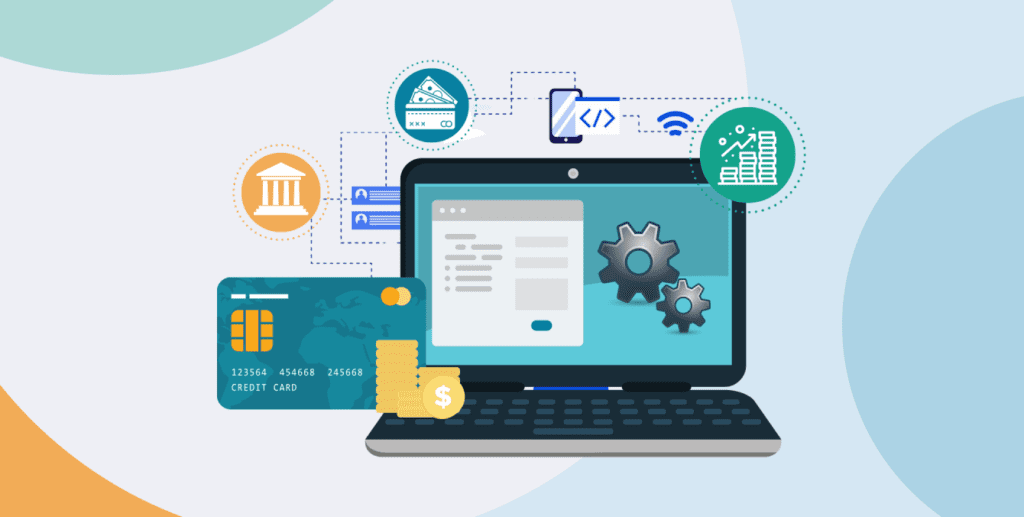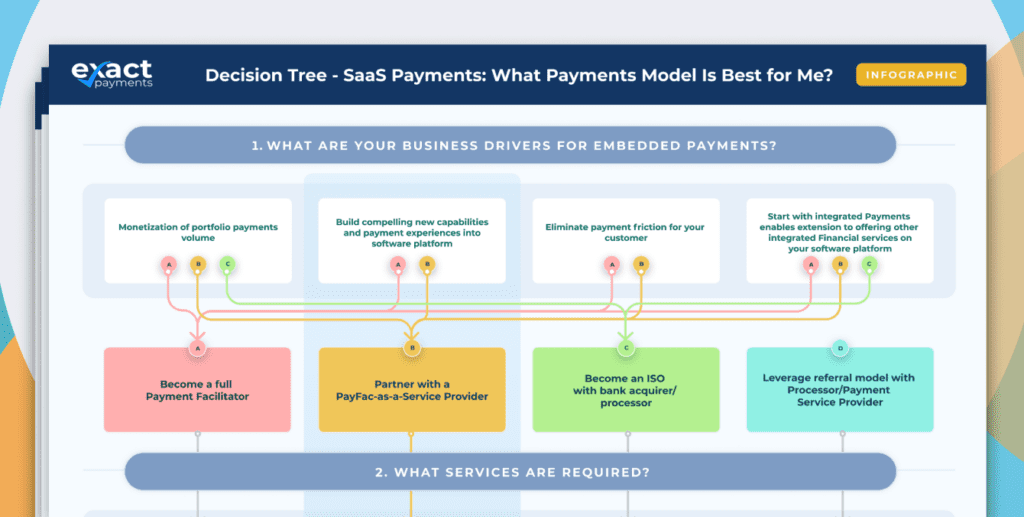Why Your Software Company Should Embrace Embedded B2B Payments

Every business needs the ability to process payments. For SaaS businesses and ISVs, that means taking payments through software, likely some form of embedded B2B payments. Fortunately, there are plenty of choices, and most ISVs and SaaS businesses can look for the options that fit the best. That means looking beyond generic payment solutions for those that provide some form of added value. Payments may seem like a cost center, but are actually key to additional revenue streams, profitability, efficiency, and competitive advantage, especially for SaaS businesses. In contrast, a generic solution ties you to the structure, procedures, and monetization (or lack thereof) of a third-party provider.
You need payments — but what is the best choice?
It’s easy to understand that you need an online payment solution, but harder to pick the right one. The question is whether you go with a generic online payment solution or choose embedded B2B payments because of the built-in advantages for SaaS businesses and ISVs.
A generic solution will be easy to implement and will do the job. Transactions will get processed, and eventually, payments will flow to the right people. But what are the up-front and recurring costs, and is there any way to recoup some or all of them?
There are undoubtedly some benefits to going this route, but they are primarily around speed and ease of implementation, and even there, the benefits are likely to be minor. Plus, you have to deal with some of the disadvantages, like a disconnect for your users with the potential for redirects, a different user interface for payment flow, and greater difficulty connecting data between systems.
It turns out that the slightly more advanced embedded online payment solutions are better for B2B and especially vertical SaaS and ISV businesses. You will get more control over the implementation, the customization, the way payments are integrated and most importantly, over the monetization and revenue.
Why are embedded B2B payments better?
With businesses that are utilizing a single SaaS solution to run most of their business (as is the case with the vertical SaaS market), SaaS has a great opportunity. By the end of 2024, 78% of small businesses are expected to use some SaaS product. Vertical SaaS is making inroads across the board because the specialization provided is strongly appealing to the businesses a vertical SaaS provider is targeting.
If you choose to embed payments, you can “lock in” customers before they go to another provider. It is an easy decision for them because they only have one provider to deal with, not multiple, and they are strongly incentivized to stick both with your payment offering and your core offering, reducing churn. Let’s take a look at the specific advantages that an embedded B2B payments solution can offer you.
Advantages of embedded B2B payments
Revenue Stream: The primary advantage of embedded payment technology over other payment solutions is that by implementing them, you also add a new revenue stream to your business. You get control over transaction fee markup that gets charged to your customers while retaining a portion of that transaction fee for your own business. Several B2B SaaS businesses have substantially increased revenues from payments — by well over 50% in some cases.
Improved Customer Experience: For many ISVs and SaaS businesses, the primary advantage of an embedded payment solution is not just the added revenue but the control over customer experience and user interface. Embedded payments APIs give you the ability to fit payment flows into existing customer interaction flows seamlessly, making payments frictionless and easier for the customer, which increases transaction volume and reduces abandonment and friction. The other user experience advantage is the ability to control the brand presentation and consistency, making for a more unified user experience and an increased level of confidence in the brand.
Improved Retention: By keeping payments as part of your software’s experience and flow, you reduce the number of touchpoints and different entities your customer has to interact with, and by improving the customer experience, you also make your software more attractive. The net result is improved customer retention and less churn.
Increased Valuation: Although SaaS and ISV business valuations based on earnings multiples have fallen recently, it’s still a common way to evaluate SaaS businesses. Current valuations are around 6 to 7 times revenue, and in some cases, it is over 10x. That means by increasing revenue using embedded payments, you are also substantially increasing the valuation of your company.
Conclusion
Although it’s easy to plug in a generic payment solution, you should look beyond that and seriously consider embedding payments, especially for B2B and SaaS or ISV businesses. You gain substantial benefits for a very minor increase in complexity and developer lift.
Want to learn more about embedded B2B payments? Contact us today to learn how to start boosting sales through embedded payments!



